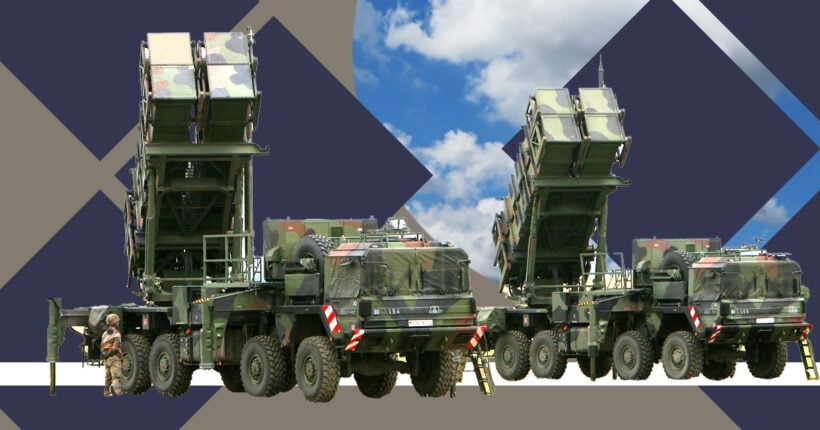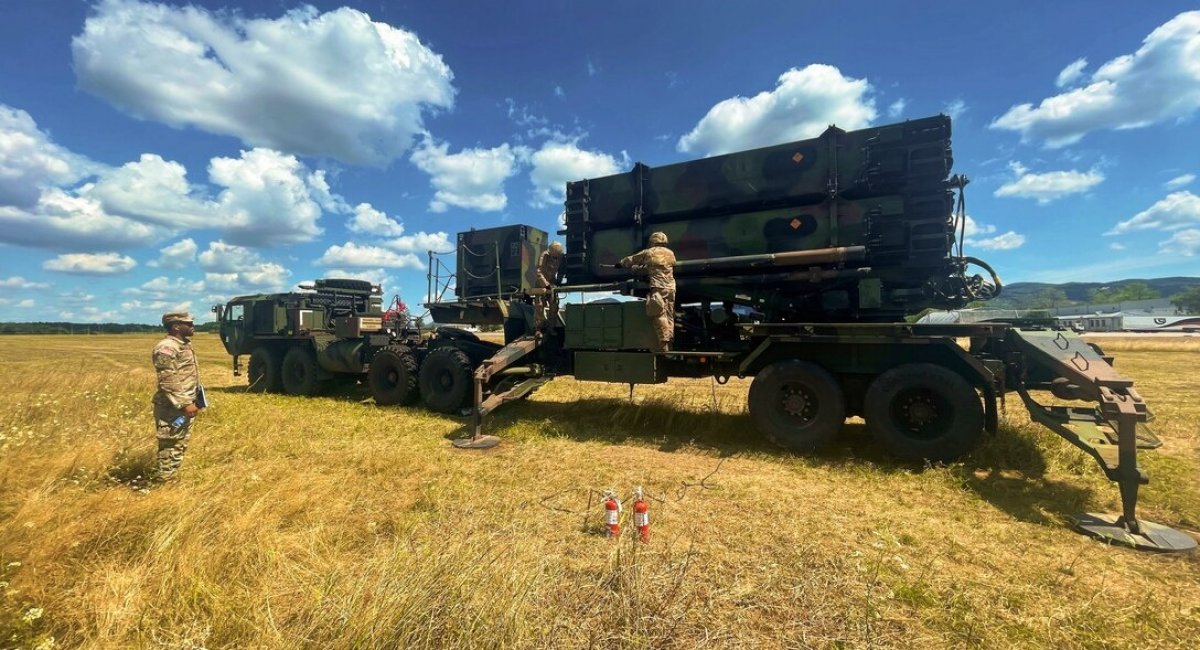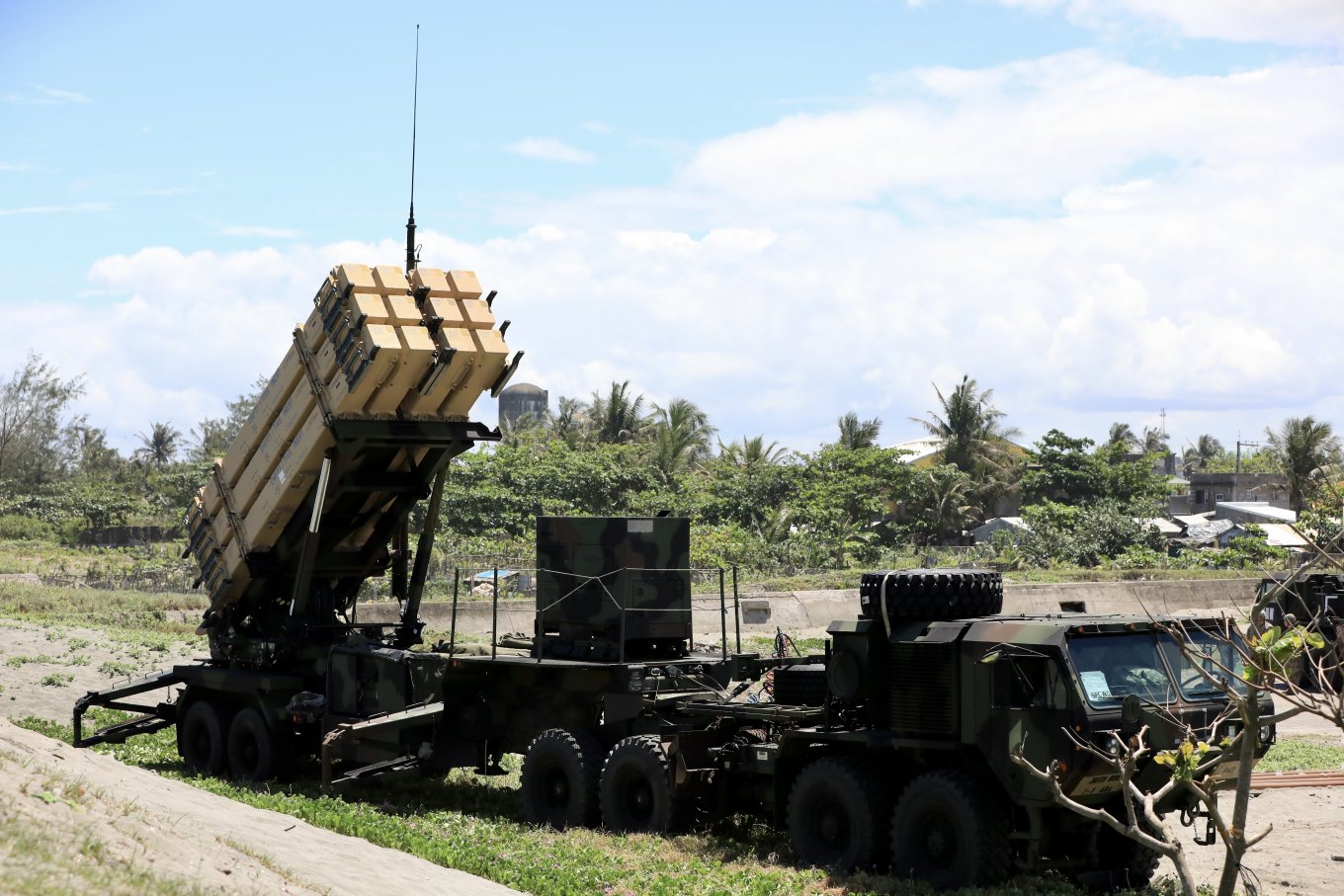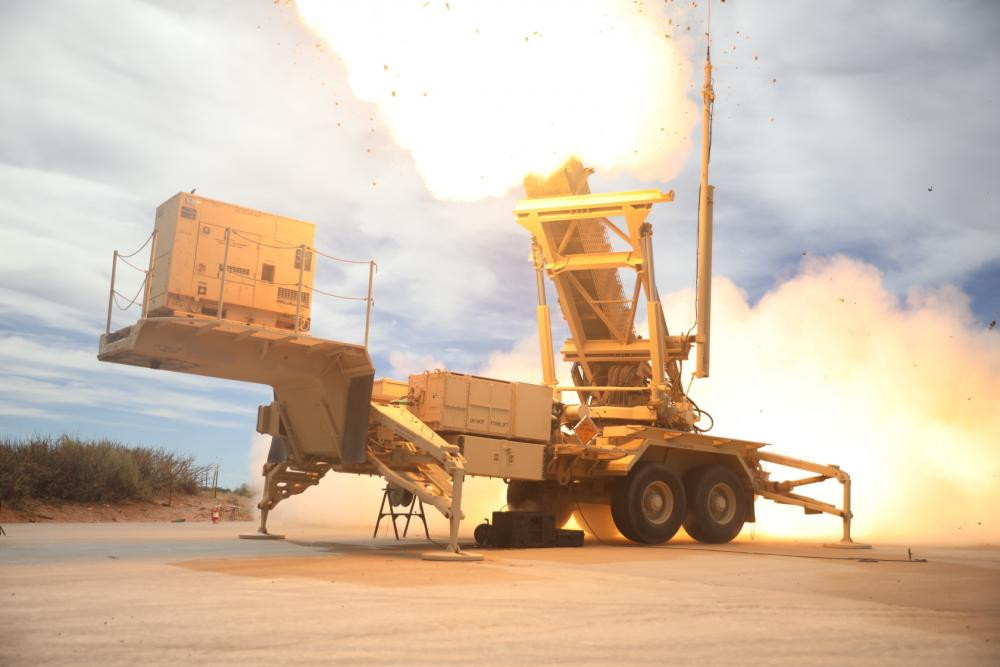
What did Ukraine get, and is it enough?
"Today, our beautiful Ukrainian sky becomes more secure because Patriot air defense systems have arrived in Ukraine. Our air defenders have mastered them as fast as they could. And our partners have kept their word," said Ukraine's defense minister Oleksii Reznikov. Later, his deputy Oleksandr Pavlyuk elaborated that Ukraine received systems from the US, Germany, and the Netherlands.
Outwardly, the MIM-104 Patriot somewhat resembles another famous American weapon, HIMARS, in appearance and mobility because the entire complex moves on trucks. But if HIMARS acts alone, the battery includes six to eight launchers, a powerful radar, a fire control system, antennas, and a mobile generator, in the case of the Patriot missile defense system.
The excitement surrounding MIM-104 is not at all surprising considering that it is in the service with the armies of the US, Israel, Germany, Japan, and South Korea and is bought by Poland and Romania, costing rather expensively: four batteries cost Warsaw almost $5 bln.
What exactly did Ukraine get? Previously, the United States and Germany promised one battery each, and the Netherlands — to send several additional launchers. Ukraine's defense ministry and the allies did not disclose other information.
Even if the Ukrainian army now has two reinforced batteries, this can be considered great but insufficient. According to Yuriy Ignat, the Ukrainian Air Force spokesman, the systems can help protect some regions and strategic facilities, particularly nuclear power plants. Still, according to Volodymyr Zelensky, at least 20 batteries are needed for the whole country.
Ukraine has a large territory, and since the Russian Federation has repeatedly hit power plants and other civilian infrastructure, the defense forces cannot build all air defense around military facilities, leaving the rest of the country unattended.
Getting new Patriot batteries will be more complicated than howitzers or Javelins. NATO countries have relatively little air defense, especially compared to the former USSR, because the United States, Britain, and others have powerful aviation that should protect their skies in case of war. For example, the US had approximately 50 Patriot batteries, but as many as 936 F-16 fighters and more than 200 F-15s.
Now it turned out that air defense systems are better suited to protect against missiles because planes cannot be in the air 24/7, and it is difficult for them to shoot down ballistic targets, so the MIM-104 is now in great demand in the world and the Americans themselves need them to cover their bases, for example, in the Pacific region.
On the other hand, there is already an example of HIMARS in Ukraine, where it all started with the supply of four units, and dozens are in use. That is why there are reasons to be hopeful: Ukraine will gradually receive a few more batteries, especially if the Russian Federation fires on civilian objects again.
However, there are no grounds to expect that all 20 will be given to Ukraine at the next Ramstein meeting and that the Ukrainian armed forces will close the sky from Russian missiles like Israel does.
What are Patriots capable of on the battlefield?

Of course, the system's primary role is to shoot down various air targets. Usually, Ukrainian air defense deals with aircraft and cruise missiles. Well, Patriot has a more powerful radar than the air defense systems that Ukraine has, and its missiles hit farther.
It sees the enemy 100 kilometers away, can track up to 100 targets, and simultaneously direct nine missiles at them, each of which can fly 150 kilometers and hit with a 90-kilogram warhead with a non-contact detonator. If a direct hit were unsuccessful, the missile would explode nearby, covering the target with a shock wave and debris.
In short, if you imagine a Patriot battery on Kyiv's central street Khreshchatyk (of course, in reality, air defense systems will not be placed there), then the Ukrainian army will be able to detect Russian planes or missiles already over Chornobyl, which is about 130 km away, or Chernihiv region and open fire on them.
The biggest reason Patriot systems were so anticipated is that they can shoot down ballistic missiles. Until now, the Ukrainian armed forces had nothing to intercept Russian Iskanders and X-22s. They are too fast and basically fall on the target from above, so it is practically impossible to hit them with a Buk or S-300, built to destroy relatively slow planes and helicopters.
The MIM-104 was upgraded to make it an anti-missile system so it can intercept ballistic targets. Of course, then the firing range will be less, only 40 kilometers. However, this did not prevent Patriot systems from shooting down ballistic missiles during various Middle Eastern conflicts. It is stated that this battery can destroy even the Russian Kinzhal hypersonic missile, although this will not be easy given the latter's speed.
In short, Patriot will significantly strengthen Ukrainian air defense. Depending on the situation, the complex has several application options: to repel missile strikes, protect cities or military facilities, or destroy Russian planes if they cross the Ukrainian border.
Well, the very fact that the MIM-104 is somewhere nearby will force the occupiers' aircraft to fly lower in order not to get on the radar — and then Ukrainian operators of lighter systems, such as Osa or Avenger, will have their chance.
In addition, Western observers have long worried that when Ukraine runs out of missiles for anti-aircraft systems, the Russian Federation may begin air raids deep into the country, like the German raids on Britain during World War II. This is another reason why Ukrainian air defense should be potent.
However, the battery cannot protect the city from missiles from all sides due to the peculiarities of the radar. Its field of vision is only 120 degrees — less than a person can see because the standard human field of vision is 180 degrees.
In the past, the armed forces often had intelligence data and knew from which side the Russians were preparing to strike. Such information may help the air forces guess the direction of the radar.
In addition, evaluating whether the Patriot battery could protect Kyiv by itself makes no sense because the Ukrainian army has a unified air defense system. Along with the new complexes, the S-300 and NASAMS and shorter-range systems such as Gepard or Osa will operate. What some couldn't destroy, others shoot down. Sometimes a cruise missile can be landed by foot soldiers, hit by man-portable air defense systems (MANPADS), or even with small arms.
Of course, the most positive option in the case of the MIM-104is that it can cover the airfield from ballistic missiles, which brings Ukraine one step closer to Western fighters such as the F-16 or F-18. These planes need a separate technical infrastructure, so they cannot roam through airports like Soviet fighters. This means the Russians can detect their base and hit them with missiles — now there is something to stop them.
What Patriots can't do on the battlefield?

Like other large and powerful anti-aircraft systems, the MIM-104 does not always detect drones because they are too small. The Yemeni Houthis once used this when they hit the protected Saudi oil refineries. The stockpile of missiles for the Patriot is limited, so, in any case, the Shaheds and Lancets will be shot down with other weapons.
The major problem is that in practice, Patriot is unlikely to be able to protect Ukraine from a new threat: Russia's guided glide bombs, which currently are the main threat from the air. In short, such ammunition has wings and a guidance system, so instead of falling vertically, it descends gradually as a paper airplane.
As a result, Russian aviation can drop such bombs from afar, 40-50 kilometers from the front line or a populated place. This is how they attack, for example, Sumy region and Kherson region, and the Armed Forces of Ukraine have nothing to answer with yet: the planes are far away, and the bomb itself is small and invisible, so it is extremely difficult to shoot it down.
Patriot may seem like a means of salvation because it will get Russian bombers even at such a distance. However, for this, the MIM-104 will have to be placed about 100 kilometers from the front line, and this, according to Oleh Katkov, editor-in-chief of Defense Express, is a crazy risk. It will not be possible to hide the Patriot system as the Armed Forces do with the HIMARS because the battery has a powerful radar, so the enemy will quickly detect the signal.
Then, according to Defense Express, the Russian Federation will use all its efforts to destroy at least one Patriot battery, the most valuable target for the enemy being the radar because the battery only has one. The enemy can try to outnumber Ukrainian air defense by simultaneously launching ballistic, cruise, and hypersonic missiles and launching aviation into an air attack.
It will be too risky a scenario for the Armed Forces. Even if the Russians spend months of stocked missiles of various types and a dozen aircraft but destroy several installations, the advantage will still be on the occupier's side. The Russian Federation can produce missiles and replace downed planes with others — they have about 500 of them. Ukraine will have to ask for scarce Patriots from its allies, and there are no guarantees they will be given.
One can hope that the Ukrainians will invent some original tactics: for example, the Americans have already learned to guide the MIM-104 missile from another radar, and in March, they were able to inconspicuously drive a device to the front line and shoot down a Russian Su-34 over occupied Yenakiieve. However, this should be a separate and lengthy special operation, so it will not be possible to stop the glider bombs on short notice.
On the other hand, if the Patriots strengthen Ukrainian air defense, perhaps the command will be able to send at least part of other available systems to cover the troops during a counteroffensive.
For example, Buk installations now protect cities and military facilities in the rear, but they are mobile, long-range (get the enemy 35 kilometers away), and will be needed to quickly install an anti-aircraft umbrella over liberated cities and villages.
Patriot systems are useful not only on the battlefield

That's right, the new weapon will be useful not only to soldiers but also to diplomats looking for ways to bring Ukraine to NATO.
"It's a breakthrough because it creates opportunities we didn't have before. Plus, the degree of compatibility (Ukraine with NATO, — ed.) is immense. Under such conditions, the Finnish scenario of joining NATO appears to be the only reasonable solution," commented Oleksii Kopytko, adviser to Ukraine's defense minister.
The connection, at first glance, is not obvious, but the secret lies in the strategy of the Ukrainian Ministry of Defense, which can be called de facto NATO membership. Ukraine should move to the standards and procedures of the Alliance, for example, in the procurement of weapons and software. Add tens of thousands of soldiers of the Ukrainian army trained under NATO programs and a large arsenal of Western weapons: from M-16 rifles to HIMARS, with which Ukrainians are successfully fighting.
The armed forces and the Ministry of Defense should be so ready to become the 32nd or 33rd member of the Alliance that Ukraine will need only a political decision of the member states to join without an extended trial period. That's how Finland joined NATO without the Membership Action Plan (MAP), which is a usual step before joining the Alliance.
***
Ukraine is gradually receiving weapons that half a year ago were in the category of beyond the limits of the possible: Patriotststems, Leopard tanks, Bradley infantry fighting vehicles, and many others (albeit slower than necessary). However, this is not just a pleasant coincidence but a natural consequence.
First of all, the exploits of Ukrainian soldiers, who proved that they could beat the enemy at the front, and in the rear, could quickly master the most modern Western weapons and even advise the Americans themselves. The only special requirement Ukrainian trainees had was soup for lunch. Diplomats, opinion leaders, and all concerned citizens who sought arms for Ukraine played their part. This is another reminder for everyone: to do your job and not stop because there are still many tasks on the way to victory.
Newsletter
Digest of the most interesting news: just about the main thing







